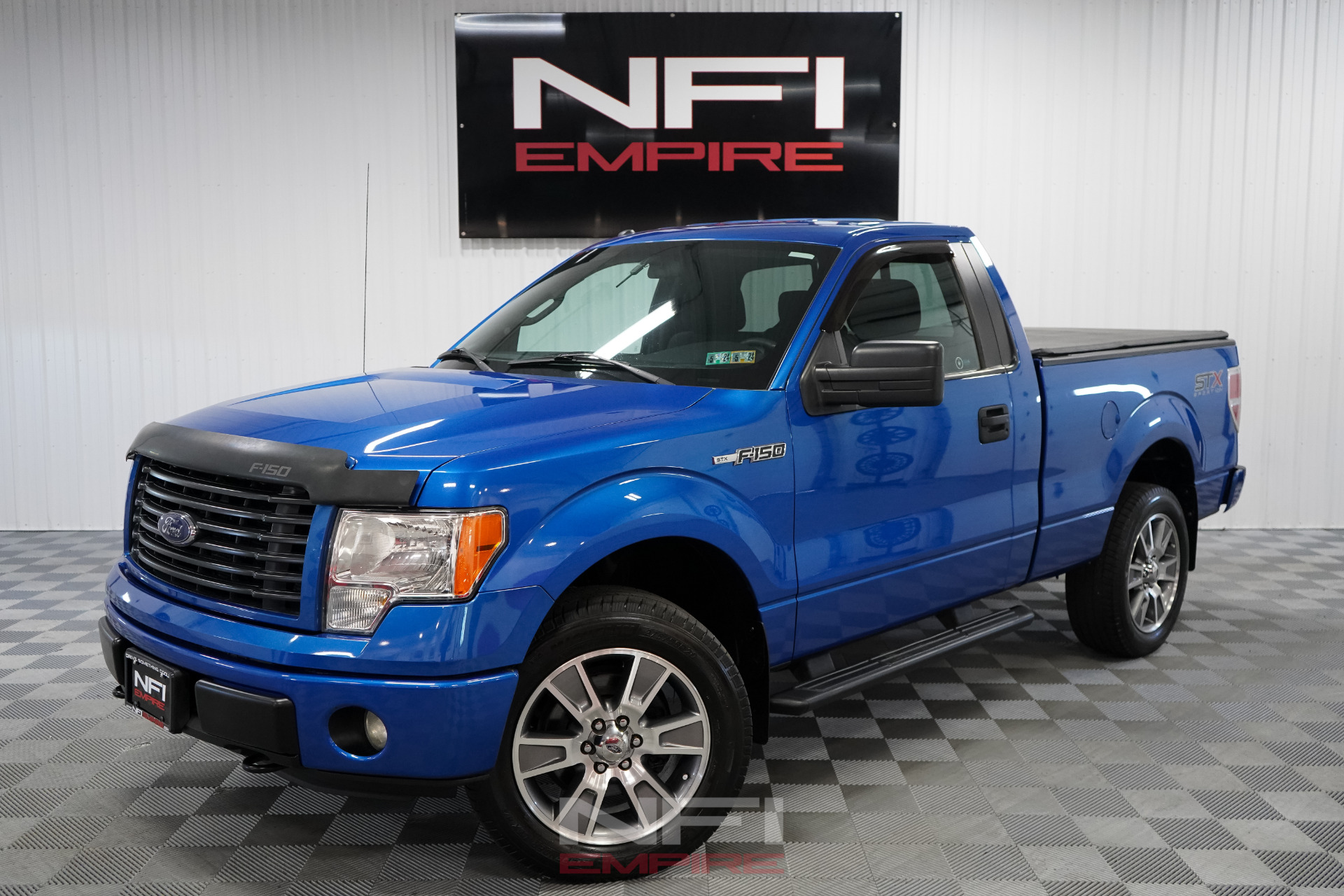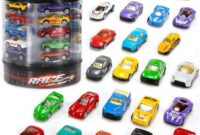Regular Cab Long Bed Trucks For Sale: The Ultimate Guide to Finding Your Workhorse pickup.truckstrend.com
In the vast landscape of pickup trucks, few configurations embody pure utility and rugged simplicity quite like the Regular Cab Long Bed (RCLB). Often overshadowed by their more passenger-friendly crew cab counterparts, RCLB trucks remain the quintessential workhorse, built for durability, payload, and the no-nonsense demands of the job site, farm, or serious DIY project. If you’re searching for a truck that prioritizes capability over creature comforts, and boasts an iconic, classic profile, then diving into the market for "Regular Cab Long Bed Trucks For Sale" is your next logical step.
This comprehensive guide will navigate you through everything you need to know about these indispensable vehicles, from understanding their unique advantages to the practicalities of finding, inspecting, and purchasing the perfect RCLB truck for your needs.
Regular Cab Long Bed Trucks For Sale: The Ultimate Guide to Finding Your Workhorse
I. Why Choose a Regular Cab Long Bed Truck? The Unsung Workhorse
The appeal of a Regular Cab Long Bed truck lies in its focused design and unparalleled utility. Unlike extended or crew cab models that sacrifice bed length for passenger space, the RCLB dedicates its entire wheelbase to maximizing cargo capacity.
Key Benefits:
- Maximum Cargo Capacity: With a standard 8-foot bed (and sometimes 6.5-foot on certain models, though 8-foot is the true "long bed" for a regular cab), these trucks can handle full sheets of plywood, long lumber, motorcycles, ATVs, and a vast array of tools and materials without needing to leave the tailgate down. This is the primary reason for their existence.
- Lower Price Point: Generally, regular cab models are the least expensive configuration within a truck lineup, both new and used. This makes them an excellent value proposition for those who need a capable truck without breaking the bank.
- Maneuverability (Relative): While an 8-foot bed adds length, the shorter overall wheelbase compared to a crew cab long bed can make them surprisingly agile in tighter spots, like crowded job sites or dense urban areas, provided you’re mindful of the rear overhang.
- Classic Aesthetic: For many, the regular cab long bed is the timeless look of a pickup truck – simple, robust, and purpose-built.
- Durability and Simplicity: Often, RCLB trucks are equipped with more basic trim levels, which can mean fewer complex electronics and luxury features that might fail over time. Their focus on utility often translates to robust, long-lasting components.
- Ideal User Profile: Contractors, landscapers, farmers, tradespeople, small business owners, and serious DIY enthusiasts who frequently haul large, bulky, or long items will find the RCLB an indispensable tool.

II. Key Features and Specifications to Consider
When searching for Regular Cab Long Bed Trucks For Sale, understanding the critical specifications will help you match a truck to your specific demands.

- Bed Length: While "long bed" generally implies 8 feet for a regular cab, always double-check. Some manufacturers might have offered a slightly shorter bed (e.g., 6.5 ft) on their regular cab models, though it’s less common for the primary "long bed" designation. An 8-foot bed is the true workhorse standard.
- Engine Options:
- V6 Engines: Offer a balance of fuel economy and decent capability for lighter loads. Modern V6 engines (especially turbocharged ones) can surprise with their towing power.
- V8 Engines: The traditional choice for serious hauling and towing, providing ample power and torque.
- Diesel Engines: Less common in regular cab light-duty trucks but available in some heavy-duty (2500/3500) models. Diesels offer superior torque, fuel efficiency (especially when towing), and longevity, but come with a higher purchase price and potentially higher maintenance costs.

- Drivetrain (2WD vs. 4WD):
- 2WD (Two-Wheel Drive): Typically rear-wheel drive, lighter, slightly better fuel economy, and lower purchase cost. Ideal for paved roads, highway driving, and lighter-duty work where off-road capability isn’t needed.
- 4WD (Four-Wheel Drive): Essential for off-road conditions, snow, mud, or unpaved job sites. Adds weight, complexity, and cost, but provides crucial traction when needed.
- Transmission: Most modern trucks come with automatic transmissions (6-speed, 8-speed, 10-speed). Manual transmissions are increasingly rare but can be found in older models or very basic work trucks, offering more direct control for some drivers.
- Payload and Towing Capacity: These are critical numbers. Always check the specific truck’s ratings (found on a sticker in the door jamb or owner’s manual) to ensure it can safely handle your intended loads. Don’t confuse payload (what you can carry in the bed and cab) with towing capacity (what you can pull behind the truck).
- GVWR (Gross Vehicle Weight Rating) and GCWR (Gross Combined Weight Rating): GVWR is the maximum permissible weight of the truck itself, including passengers, cargo, and fuel. GCWR is the maximum permissible weight of the truck and its loaded trailer. Understanding these limits is vital for safe operation.
- Trim Levels: RCLB trucks are often found in base or work truck (WT, XL, Tradesman) trim levels, meaning fewer luxury features but robust, easy-to-clean interiors. Higher trims with more amenities are possible but less common.
III. Where to Find Regular Cab Long Bed Trucks For Sale
The search for an RCLB truck can lead you to various avenues, each with its own advantages and disadvantages.
- New Car Dealerships: While less common than other configurations, new regular cab long bed trucks are still available from manufacturers like Ford (F-150, Super Duty), Chevrolet (Silverado 1500, HD), Ram (1500 Classic, HD), and Toyota (Tundra). They are often ordered specifically for fleet use or a customer’s particular needs, so you might need to place an order rather than find one readily on the lot.
- Used Car Dealerships: A more fertile ground for finding a variety of RCLB trucks. Dealerships offer convenience, financing options, and often some form of warranty (even if limited). You’ll find a range of years, mileage, and conditions.
- Online Marketplaces:
- Major Aggregators: Websites like AutoTrader.com, Cars.com, and Edmunds.com allow you to filter by body style (Regular Cab) and bed length (Long Bed) from a vast network of dealerships and private sellers.
- Classifieds: Craigslist and Facebook Marketplace are excellent for finding private sellers, potentially offering better deals, but requiring more caution and due diligence.
- eBay Motors: Good for both private and dealer listings, sometimes with auction options.
- Private Sellers: Buying directly from an individual can often yield the best price, as you avoid dealership markups. However, you’ll be responsible for all inspections, paperwork, and financing.
- Fleet Sales and Auctions: Companies often cycle out their work trucks, which are frequently RCLB models. These trucks might have higher mileage but are often well-maintained due to strict fleet maintenance schedules. Public auctions can offer great deals, but usually require cash payment and don’t allow for thorough pre-purchase inspections.
- Specialty Truck Dealerships: Some dealerships specialize specifically in work trucks or used trucks, making them a good resource for finding unique configurations like the RCLB.
IV. The Buying Process: A Step-by-Step Guide
Purchasing a Regular Cab Long Bed truck, especially a used one, requires a methodical approach to ensure you get a reliable vehicle.
-
Define Your Needs and Budget:
- Purpose: What will you primarily use the truck for? Hauling heavy materials, towing a trailer, or just general utility?
- Cargo: What specific items will you carry? Measure them!
- Towing: What’s the maximum weight you might tow?
- Budget: Set a realistic budget that includes the purchase price, insurance, registration, potential repairs, and ongoing fuel costs. Don’t forget sales tax and any applicable fees.
-
Research Models and Common Issues: Look into specific makes and models (e.g., Ford F-150/F-250, Chevy Silverado 1500/2500HD, Ram 1500/2500) that offer the RCLB configuration. Research common problems for the years you’re considering. Online forums and owner reviews are invaluable.
-
Inspect Thoroughly (Crucial!):
- Exterior: Look for rust, especially on the frame, bed mounts, wheel wells, and rocker panels. Check for signs of accidents (uneven panel gaps, mismatched paint).
- Engine Bay: Look for fluid leaks (oil, coolant, transmission fluid), frayed belts, corroded battery terminals, and any signs of poor maintenance.
- Interior: Check for wear and tear, functionality of all electronics (lights, radio, AC/heat, windows), and general cleanliness.
- Tires and Brakes: Check tire tread depth and even wear. Inspect brake pads and rotors.
- Underneath: Get under the truck if possible. Check the exhaust system, suspension components, and drive shafts for damage or excessive rust.
- Pre-Purchase Inspection (PPI): This is the most important step. Have an independent, trusted mechanic perform a comprehensive PPI. They can identify issues you might miss and give you an unbiased assessment of the truck’s condition.
-
Test Drive:
- Drive on various roads (highway, city, rough roads if applicable).
- Listen for unusual noises (engine, transmission, differential, suspension).
- Check steering (should be straight), braking (no pulling), and acceleration (smooth, no hesitation).
- Test 4WD if equipped.
-
Check Vehicle History Report: Obtain a CARFAX or AutoCheck report. This will reveal past accidents, salvage titles, flood damage, odometer discrepancies, and service history.
-
Negotiation: Be prepared to negotiate, especially on used trucks. Know the market value and be ready to walk away if the deal isn’t right.
-
Paperwork: Ensure all titles, registrations, and bills of sale are correctly filled out and transferred.
V. Common Challenges and Solutions When Buying Used RCLB Trucks
Buying a used Regular Cab Long Bed truck can present specific challenges, but solutions exist.
- High Mileage: Many RCLB trucks have high mileage because they were used as work vehicles.
- Solution: High mileage isn’t necessarily a deal-breaker if the truck has been well-maintained. A thorough PPI is crucial. Focus on service records and the overall condition rather than just the odometer reading.
- Rust: Given their work ethic, many used trucks, especially in regions with harsh winters, will have some degree of rust.
- Solution: Prioritize frame rust inspection. Surface rust on the bed or body panels can be addressed, but extensive frame rust can compromise structural integrity. Look for trucks from southern states if possible.
- Wear and Tear: Interiors might be scuffed, seats worn, and suspension components might be tired.
- Solution: Factor in the cost of repairs or upgrades into your budget. Upholstery shops can revitalize interiors, and suspension components are often replaceable.
- Limited Availability (Specific Configurations): Finding a specific year, engine, or trim level of RCLB can be challenging due to their niche market.
- Solution: Expand your search radius, use online filters effectively, and be patient. Consider traveling for the right truck.
- Finding the Right Balance (Price vs. Condition): You want a good deal, but not at the expense of reliability.
- Solution: Prioritize mechanical soundness. A truck with minor cosmetic flaws but a solid engine and transmission is a better buy than a pristine-looking truck with hidden mechanical issues.
VI. Maintaining Your Regular Cab Long Bed Truck
Once you’ve purchased your RCLB, proper maintenance is key to its longevity.
- Regular Fluid Changes: Oil, transmission fluid, differential fluid, coolant.
- Tire Care: Regular rotation, balancing, and proper inflation.
- Brake Inspection: Periodically check pads, rotors, and fluid levels.
- Rust Prevention: Wash off road salt, apply rust inhibitors, and address any new rust spots promptly.
- Adhere to Limits: Never exceed the truck’s stated payload or towing capacities.
- Routine Checks: Listen for new noises, check lights, and regularly inspect belts and hoses.
Table: Estimated Price Ranges for Popular Regular Cab Long Bed Trucks (Used)
Note: These prices are highly generalized estimates and can vary significantly based on specific year, mileage, engine, drivetrain (2WD/4WD), trim level, condition, region, and market demand. Always consult current market data (e.g., Kelley Blue Book, Edmunds, NADAguides) for precise valuations.
| Make/Model (Examples) | Typical Years | Condition: Fair (High Mileage, Cosmetic Flaws) | Condition: Good (Average Mileage, Minor Flaws) | Condition: Excellent (Low Mileage, Well-Maintained) |
|---|---|---|---|---|
| Ford F-150 / F-250 | 2005-2015 | $8,000 – $15,000 | $12,000 – $22,000 | $18,000 – $30,000+ |
| Chevy Silverado 1500 / 2500HD | 2005-2015 | $7,500 – $14,000 | $11,000 – $21,000 | $17,000 – $28,000+ |
| Ram 1500 / 2500 | 2005-2015 | $7,000 – $13,500 | $10,500 – $20,000 | $16,000 – $27,000+ |
| Toyota Tundra | 2007-2015 | $9,000 – $16,000 | $14,000 – $24,000 | $20,000 – $32,000+ |
| Ford F-150 / F-250 | 2016-Present | $18,000 – $28,000 | $25,000 – $38,000 | $35,000 – $50,000+ (New base models can exceed $40k) |
| Chevy Silverado 1500 / 2500HD | 2016-Present | $17,000 – $27,000 | $24,000 – $37,000 | $34,000 – $48,000+ |
| Ram 1500 / 2500 | 2016-Present | $16,500 – $26,000 | $23,000 – $36,000 | $33,000 – $47,000+ |
| Toyota Tundra | 2016-Present | $19,000 – $29,000 | $26,000 – $39,000 | $36,000 – $52,000+ |
Frequently Asked Questions (FAQ)
Q1: What’s the main advantage of a regular cab long bed truck over other configurations?
A1: The primary advantage is maximizing cargo capacity in the bed. With no second row of seats, the entire length of the truck is dedicated to a long 8-foot bed, making it ideal for hauling large materials that wouldn’t fit in shorter beds.
Q2: Are regular cab long bed trucks cheaper than other configurations?
A2: Generally, yes. Regular cab models are typically the base configuration for any given truck line, meaning they have fewer amenities and less material, leading to a lower manufacturing cost and thus a lower purchase price, both new and used.
Q3: Is it hard to find a new regular cab long bed truck?
A3: They are less common on dealer lots than crew cab models, which are more popular with general consumers. However, manufacturers still produce them, often for fleet orders or specific customer requests. You might need to order one from a dealership.
Q4: What should I look for regarding rust when buying a used RCLB?
A4: Pay close attention to the frame (especially near suspension mounting points), bed supports, wheel wells, rocker panels, and cab corners. Surface rust is common and often manageable, but extensive, flaky, or perforated rust on the frame is a major red flag.
Q5: Can I tow a large trailer with a regular cab long bed?
A5: Absolutely, provided the truck’s engine, drivetrain, and GVWR/GCWR are rated for it. Many heavy-duty (2500/3500 series) regular cab long beds are purpose-built for significant towing and hauling. Always check the specific truck’s ratings.
Q6: Are regular cab long bed trucks good for daily driving?
A6: While they can be used for daily driving, their primary strength is utility. The longer wheelbase can make parking and maneuvering in tight spaces more challenging than smaller vehicles or even short-bed trucks. The ride might also be firmer, especially when unloaded, as they are designed to carry heavy loads.
Conclusion
Regular Cab Long Bed trucks for sale represent a segment of the pickup market dedicated to uncompromising utility. They are the quintessential workhorses, offering maximum cargo capacity, a robust build, and often a more accessible price point than their multi-passenger counterparts.
While finding the perfect RCLB might require a bit more searching, and careful inspection is paramount, the rewards are immense. For those who prioritize capability, durability, and a classic truck aesthetic, investing in a well-maintained Regular Cab Long Bed truck is not just buying a vehicle; it’s acquiring a dependable partner ready to tackle any task. By following the advice in this guide, you’ll be well-equipped to navigate the market and drive away in the perfect work-ready truck.



